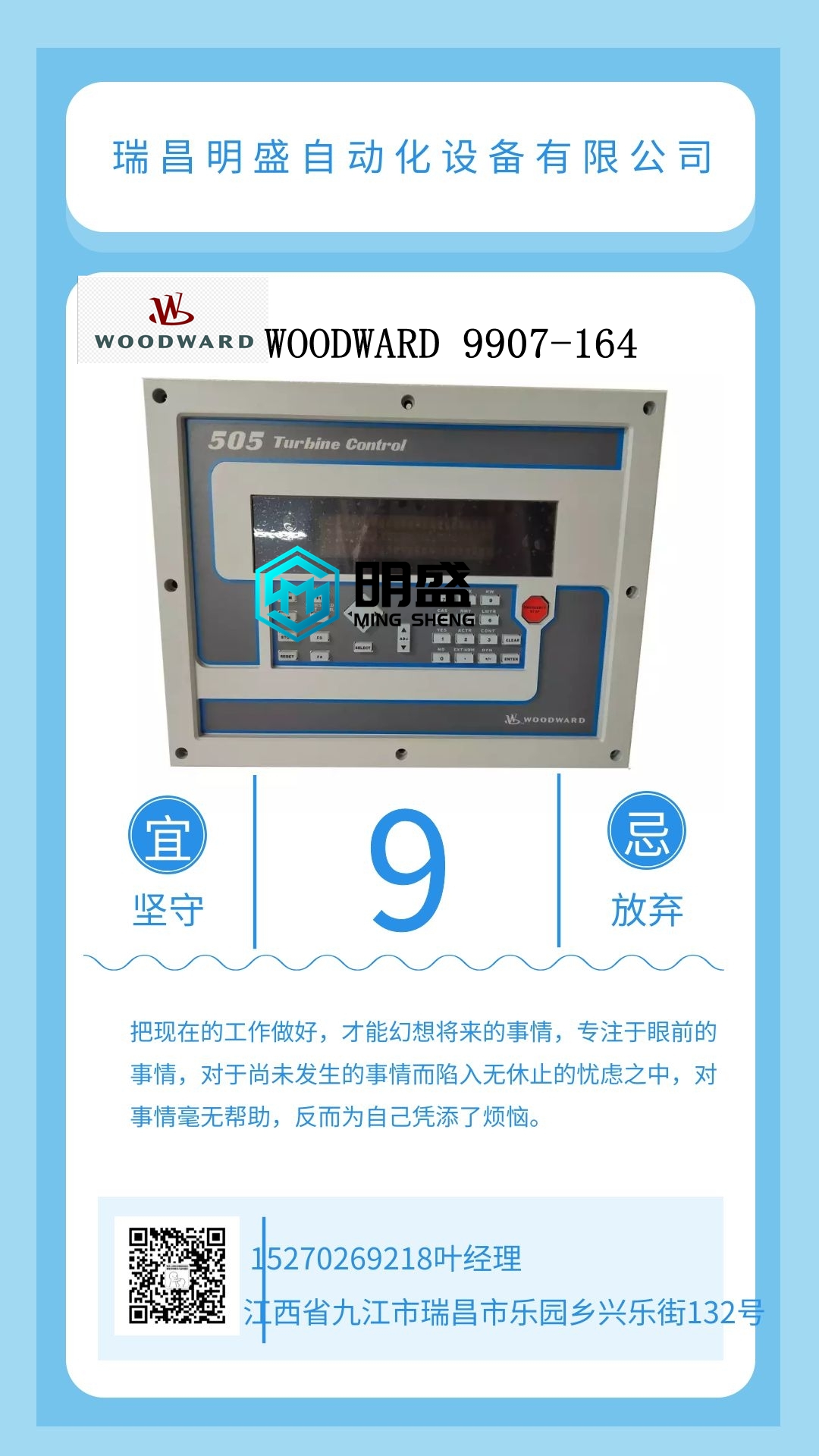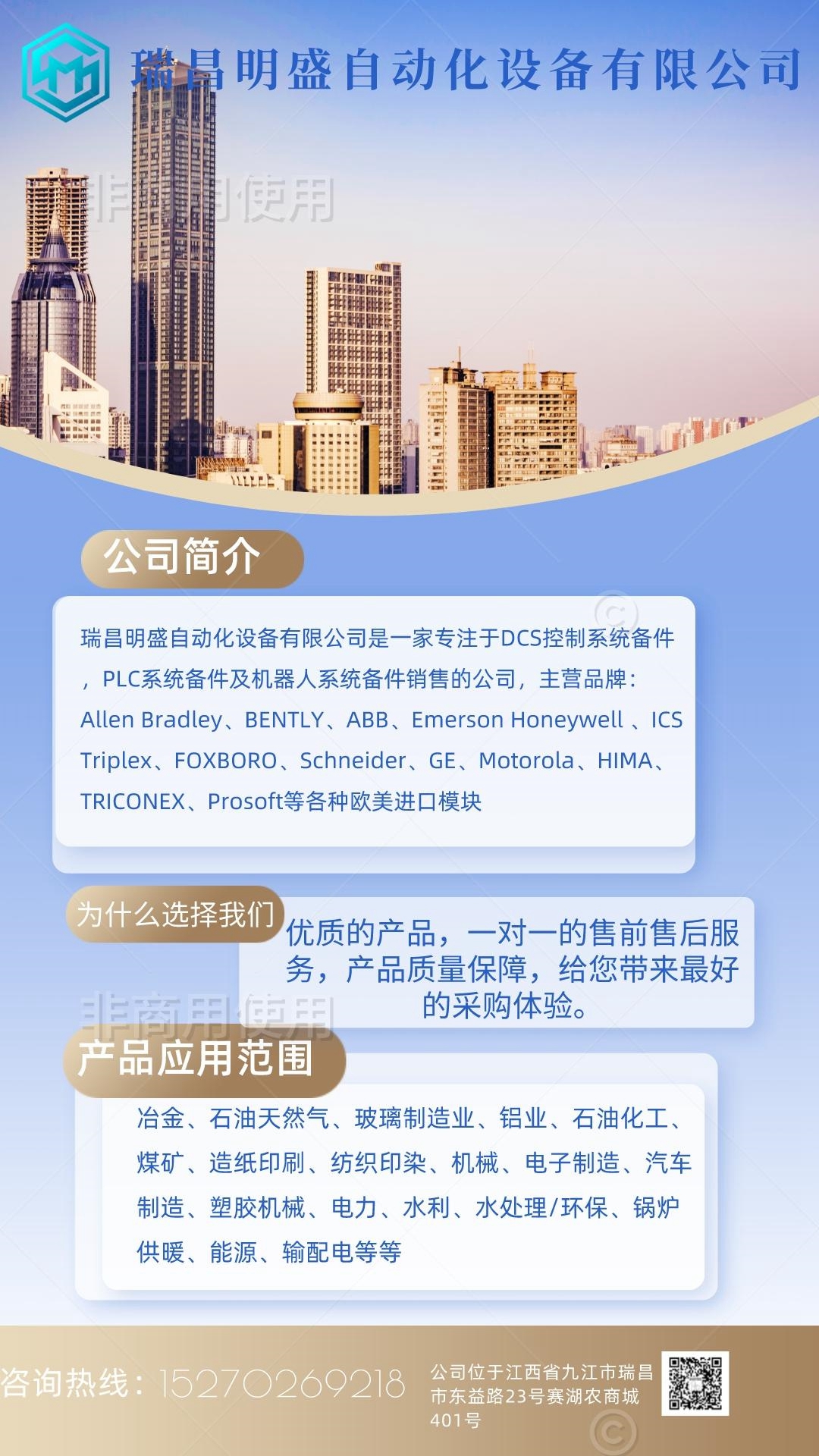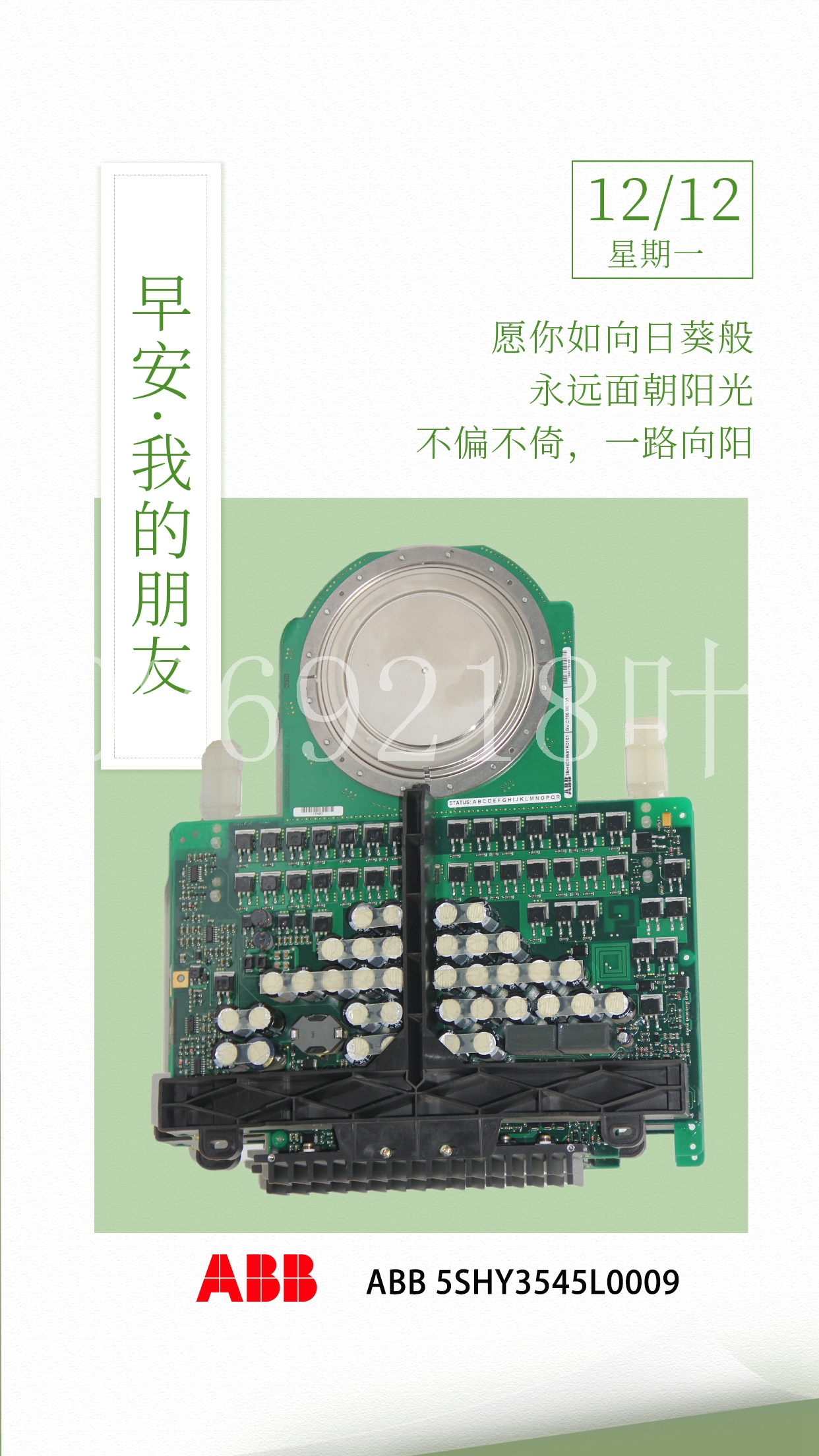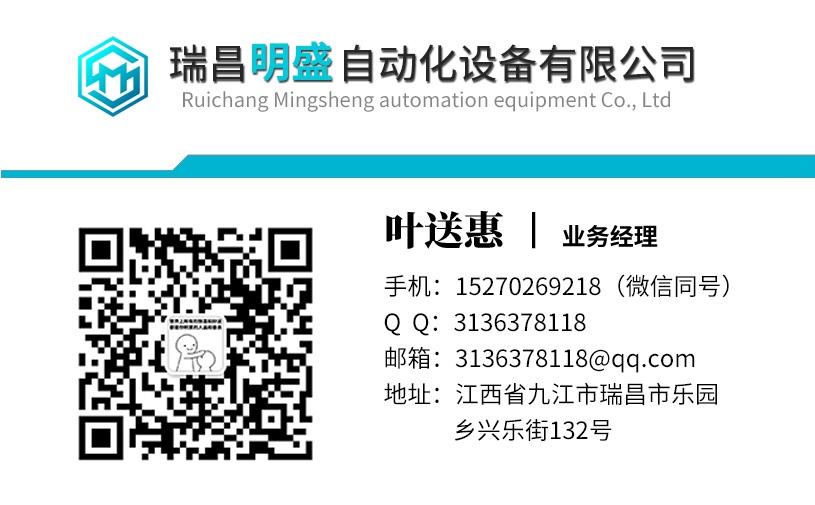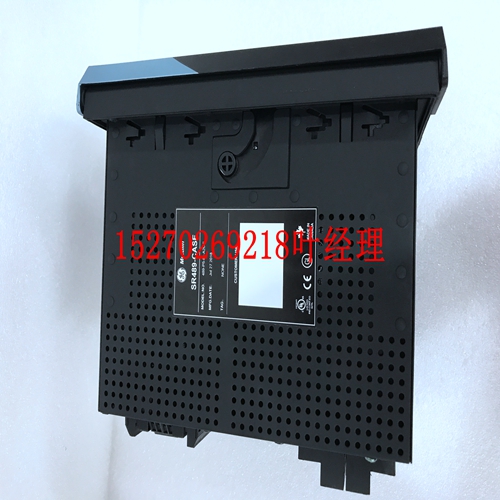IS200JPDDG1A工控备件机器人模块
支持数字和模拟输入和输出点,以及脉冲和热电偶输入和多种通信协议。Tricon控制器机箱Tricon控制器最多可包含15个机箱,可容纳输入、输出、通信、接口和热备盘模块的任何适当组合。有三种类型的底盘:主底盘、扩展底盘和RXM底盘。•Tricon控制器的主机箱包含主处理器模块和多达6个插槽组的I/O模块。机箱中的I/O模块通过I/O扩展总线端口连接,这些端口是三重RS-485双向通信端口。•扩展机箱(机箱2至15)可容纳多达8个插槽组的I/O模块和HART接口模块。扩展机箱通过三重RS-485双向通信端口连接到主机箱。通常,扩展机箱必须位于离主机箱或RXM机箱不超过100英尺(30米)的位置。•RXM机箱包含一个主或远程RXM模块组和6个I/O模块插槽组。RXM底盘使系统能够使用SRXM模块扩展到距离主底盘7.5英里(12公里)的远程位置。4第1章Tricon v9–v10系统简介规划和安装指南图1 Tricon示例配置Tricon控制器现场接线外部终端组件可用于连接现场设备。有关终端产品的更多信息,请参阅Tricon v9–v10系统的现场终端指南。TriStation软件TriStation 1131或TriStation MSW软件需要开发和下载在Tricon控制器上运行的控制程序。TriStation MSW包括用于程序开发的继电器梯形逻辑。TriStation 1131提供三种符合IEC 61131-3标准的编程语言:功能框图、梯形图和结构化文本。可选语言CEMPLE(因果矩阵)可单独购买。有关更多信息,请参阅所用版本的TriStation指南。TriStation(IBM PC兼容)Tricon主机箱(机箱#1)Tricon扩展机箱#2 Tricon扩展机架#3 Tricon扩展底盘#15扩展机箱#14-14 3 3 3 3操作理论5 Tricon v9–v10系统操作理论三模块冗余(TMR)架构的规划和安装指南确保容错,在存在部件硬故障或来自内部或外部的瞬时故障的情况下进行不间断控制。每个I/O模块包含三个独立通道的电路。输入模块上的每个通道读取过程数据,并将该信息传递给各自的主处理器。三个主处理器使用一个称为TriBus的专用高速总线系统相互通信。图2 Tricon控制器的三重架构每次扫描一次,主处理器通过TriBus与邻居同步并通信。TriBus对数字输入数据进行表决,比较输出数据,并将模拟输入数据的副本发送给每个主处理器。主处理器执行控制程序,并将控制程序生成的输出发送到输出模块。Tricon控制器对输出模块上的输出数据进行投票,使其尽可能接近现场,以检测和补偿主处理器和驱动至现场的最终输出之间发生的错误。每个I/O插槽可以包含两个相同的I/O模块,这意味着如果在一个模块上检测到故障,控制将自动切换到正常的模块。当插槽中只安装了一个模块时,也可以在线更换故障模块。在这种情况下,将一个正常的模块插入到备用插槽中,并将控制切换到该模块,从而可以拉出故障模块并将其送去维修。主处理器模块Tricon控制器包含三个主处理器模块。每个主处理器控制系统的单独通道,并与其他主处理器并行运行。每个主处理器上的专用I/O处理器管理主处理器和I/O模块之间交换的数据。位于机箱背板上的三重I/O总线通过I/O总线电缆从机箱延伸到机箱。当轮询每个输入模块时,I/O总线的适当通道将新的输入数据传输到主处理器。输入数据被汇编到主处理器中的一个表中,并存储在内存中,用于硬件投票过程。输入通道A输入通道B输入通道C输出通道A输出通道B输出通道C主处理器C主处理器B输入/输出总线I/O总线I/O总线TriBus TriBus表决器主处理器A输入终端输出终端自动备用自动备用6第1章Tricon v9–v10系统的规划和安装指南
supports digital and analog input and output points, as well as pulse and thermocouple inputs and multiple communication protocols. Tricon Controller Chassis A Tricon controller can include a maximum of 15 chassis, housing any appropriate combination of input, output, communication, interface, and hot-spare modules. There are 3 types of chassis: Main, Expansion, and RXM. • The Main Chassis of the Tricon controller houses the Main Processor modules and up to 6 slot sets of I/O modules. The I/O modules in a chassis are connected via I/O expansion bus ports that are triplicated RS-485 bi-directional communication ports. • An Expansion Chassis (chassis 2 to 15) houses up to 8 slot sets of I/O modules, and HART Interface Modules. The Expansion Chassis connects to the Main Chassis by means of a triplicated RS-485 bi-directional communication port. Generally, an Expansion Chassis must be located no more than 100 feet (30 meters) from the Main Chassis or an RXM Chassis. • An RXM Chassis houses a Primary or Remote RXM Module set and 6 slot sets of I/O modules. An RXM Chassis enables a system to extend to remote locations up to 7.5 miles (12 kilometers) from the Main Chassis, using SRXM modules. 4 Chapter 1 Introduction Planning and Installation Guide for Tricon v9–v10 Systems Figure 1 Tricon Sample Configuration Tricon Controller Field Wiring External termination assemblies are available for connection to field devices. For additional information on termination products, see the Field Terminations Guide for Tricon v9–v10 Systems. TriStation Software TriStation 1131 or TriStation MSW software is required to develop and download the control program that runs on the Tricon controller. TriStation MSW includes Relay Ladder Logic for program development. TriStation 1131 provides three programming languages which comply with the IEC 61131-3 standard: Function Block Diagram, Ladder Diagram, and Structured Text. An optional language, CEMPLE (Cause and Effect Matrix), can be purchased separately. For more information, see the TriStation guide for the version being used. TriStation (IBM PC compatible) Tricon Main Chassis (Chassis #1) Tricon Expansion Chassis #2 Tricon Expansion Chassis #3 Tricon Expansion Chassis #15 Expansion Chassis #4 - 14 3 3 3 3 3 3 Theory of Operation 5 Planning and Installation Guide for Tricon v9–v10 Systems Theory of Operation Triple Modular Redundant (TMR) architecture ensures fault tolerance and provides error-free, uninterrupted control in the presence of either hard failures of components or transient faults from internal or external sources. Every I/O module houses the circuitry for three independent channels. Each channel on the input modules reads the process data and passes that information to its respective Main Processor. The three Main Processors communicate with each other using a proprietary highspeed bus system called the TriBus. Figure 2 Triplicated Architecture of the Tricon Controller Once per scan, the Main Processors synchronize and communicate with their neighbors over the TriBus. The TriBus votes digital input data, compares output data, and sends copies of analog input data to each Main Processor. The Main Processors execute the control program and send outputs generated by the control program to the output modules. The Tricon controller votes the output data on the output modules as close to the field as possible to detect and compensate for errors that occur between the Main Processor and the final output driven to the field. Each I/O slot can contain two identical I/O modules which means if a fault is detected on one module, control is automatically switched to the healthy module. A faulty module can also be replaced online when only one module is installed in the slot. In this case, a healthy module is inserted in the spare slot and the control is switched to this module, which allows the faulty module to be pulled and sent for repair. Main Processor Modules A Tricon controller contains three Main Processor modules. Each Main Processor controls a separate channel of the system and operates in parallel with the other Main Processors. A dedicated I/O Processor on each Main Processor manages the data exchanged between the Main Processor and the I/O modules. A triplicated I/O bus, located on the chassis backplane, extends from chassis to chassis by means of I/O bus cables. As each input module is polled, the appropriate channel of the I/O bus transmits new input data to the Main Processor. The input data is assembled into a table in the Main Processor and is stored in memory for use in the hardware voting process. Input Channel A Input Channel B Input Channel C Output Channel A Output Channel B Output Channel C Main Processor C Main Processor B I/O Bus I/O Bus I/O Bus TriBus TriBus TriBus Voter Main Processor A Input Termination Output Termination Auto Spare Auto Spare 6 Chapter 1 Introduction Planning and Installation Guide for Tricon v9–v10 Systems The individual input table in each Main Processor is transferred to its neighboring Main Processors over the TriBus. During this transfer, hardware voting takes place. The TriBus uses a direct memory
